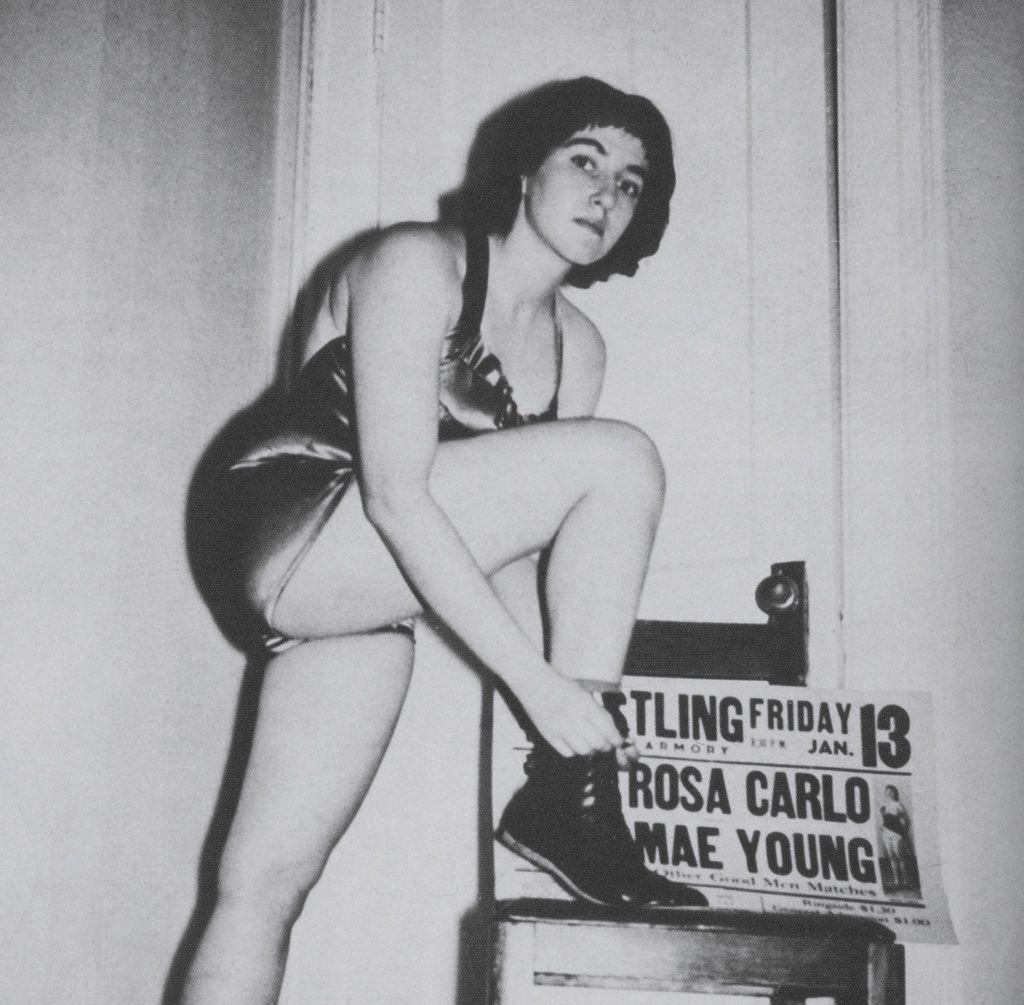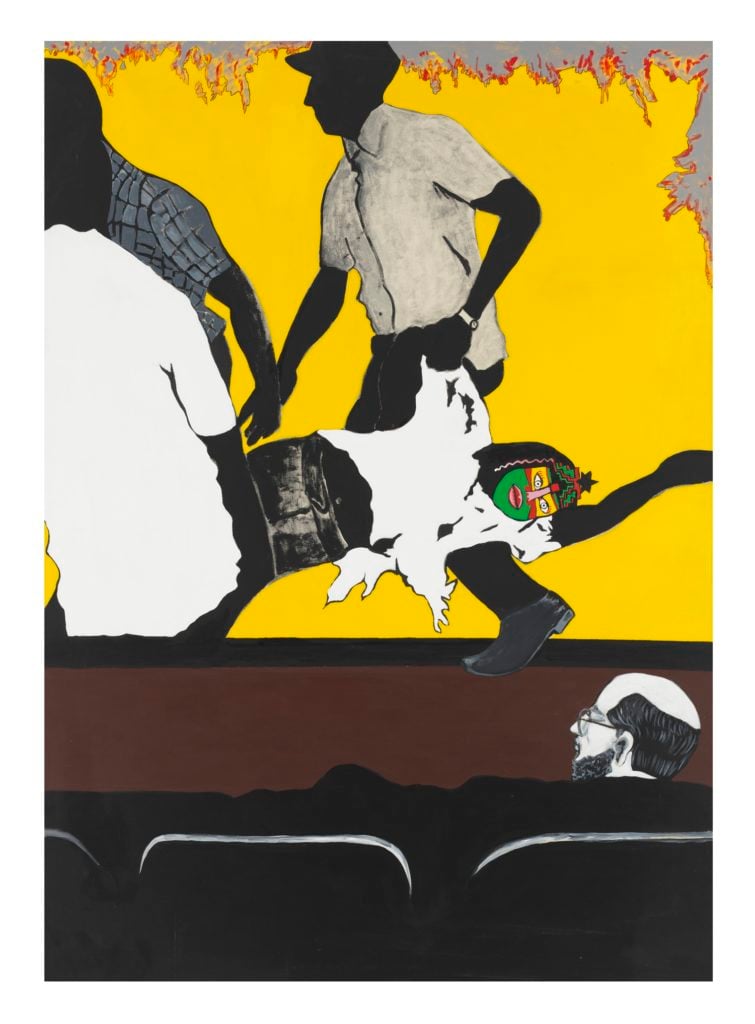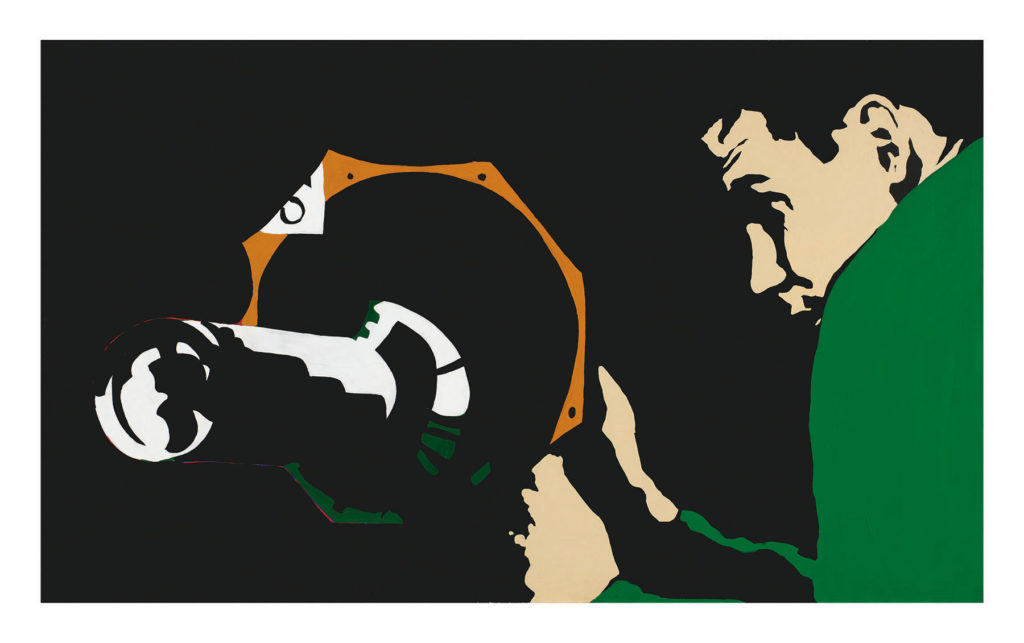Art & Exhibitions
The Artist Rosalyn Drexler, 90, Was Once a Professional Wrestler. Why? ‘You Have to Have Too Many Ideas’
At 90, Rosalyn Drexler reflects on a life of endless creativity.

At 90, Rosalyn Drexler reflects on a life of endless creativity.

Sarah Cascone

“I cannot just do nothing,” said Rosalyn Drexler. At 90 years old, the acclaimed artist, novelist, and playwright is as busy as ever, having just opened a show at Garth Greenan in New York, her second since joining the Chelsea gallery in 2015.
It was there that she spoke to artnet News about the exhibition, which features darkly political large-scale works from 1986 to 1989; finding renewed success late in life; and the endurance of a career that has seen her excel at everything from teaching at the renowned Iowa Writers’ Workshop to authoring Emmy and Obie award-winning scripts and plays to touring the country as a professional wrestler.
“It was a rich life,” Drexler admitted, recalling fondly the New York art scene of the 1960s, which she describes as “a smaller community” where folks such as Franz Kline, and Elaine and Willem de Kooning would all attend each other’s openings and gather at watering holes such as the Cedar Bar and Max’s Kansas City.
“I surrounded myself with artists, and it must have rubbed off,” she said.

Rosalyn Drexler’s Love and Violence (1963). © 2017 Rosalyn Drexler/ Artists Rights Society (ARS), New York and Garth Greenan Gallery, New York.
A native of the Bronx, Drexler had her first show out in Berkeley, where she lived briefly with her husband and fellow artist, Sherman Drexler (1925–2014). It was a joint exhibition for the couple, who met studying at New York’s Hunter College and married when Drexler was just 19. She had studied art in high school, but never finished her college degree, giving birth to a daughter, the first of two children, at 20.
In Berkeley, Drexler showed her found-object sculpture, which was made from “junk from the street,” she said. The work “filled the whole house.”
Among her early and most fervent supporters, upon her return to New York, was David Smith. “He said, ‘A lot of women seem to be very talented, and then they disappear. I don’t know what happens, but could you please continue sculpting?'” Drexler recalled.
Of course, Drexler is today best known for her painting, switching mediums after her dealer, Anita Rubin, closed the Reuben Gallery in 1961. The other artists in Rubin’s stable included Claes Oldenburg, Robert Rauschenberg, Lucas Samaras, and Red Grooms. “All the guys found a place to go, and I didn’t,” Drexler recalled. “I was so naive. I was thinking ,’Well, it’s because I’m not a painter!'”

Rosalyn Drexler’s Chuck Watches Rescue (1989). © Rosalyn Drexler/Artist Rights Society (ARS), New York and Garth Greenan Gallery, NY.
So she set out to change that, even though she “didn’t know how to draw.” Drexler, of course, didn’t let such perceived limitations stop her. (She also wrote her first play despite never having been to the theater.) A relative who ran a theater gave her a bunch of extra movie posters, which became the foundation of Drexler’s process, a hybrid of collage and painting that involves layering swatches of paint over found imagery on canvas.
Examples of this technique can be seen at Garth Greenan, in works that date back to a little-known period in Drexler’s career. A recurring theme in the show is a masked male figure, his face—and perhaps agenda—hidden, but still identifiable as the nefarious businessman or politician. The influence of the Cold War can be seen in the presence of George H.W. Bush, Ronald Reagan, and Mikhail Gorbachev, but the overarching themes are somehow more timely than ever.
“Power, desolation, destruction, blather, broken promises…” said Drexler. “It seems like things repeat themselves.”
“In choosing these works, we didn’t have any idea how apropos the work was going to be, politically. We didn’t know that it was going to be two minutes to midnight, again,” Greenan explained.
“They might as well be new works, because no one’s ever seen them,” the gallerist told artnet News. Greenan believes the art world has done the artist a disservice in focusing almost exclusively on her breakthrough paintings from the 1960s.

Rosalyn Drexler’s Hold Your Fire (Men and Machines) (1966). © 2017 Rosalyn Drexler/ Artists Rights Society (ARS), New York and Garth Greenan Gallery, New York.
Nevertheless, a renewed interest in her work is starting to flourish: The Museum of Modern Art in New York recently acquired Drexler’s Hold Your Fire (Men and Machines) (1966), an acrylic and paper-collage painting of a man holding what looks to be a military instrument. But the newfound recognition is somewhat of a bittersweet milestone for the artist. “I know it’s all success, but when it comes this late in life, you miss the people you could share it with,” Drexler admitted. “It’s hard to believe how quietly time really passes.”
The current exhibition only begins to scratch the surface of Drexler’s unseen oeuvre. She recently completed 24 new paintings, which will be featured at the gallery in 2018.
Through it all, Drexler has also devoted herself to her writing, authoring 10 plays (winning three Obies) and nine novels, with number 10 on the way.
“You have to have too many ideas, too many influences—I was forced by who I was, the inner me, to create, to write and to paint,” she said of her prolific nature. “It’s all-enveloping, intriguing, and the best way to live.”
“Your work is where you live,” Drexler added. “It’s a way to meditate or get away from the ordinary things that life brings.”

Rosalyn Drexler’s Sueño Revista (Rosalyn and Sherman in a Rousseau), (1989). © Rosalyn Drexler/Artist Rights Society (ARS), New York and Garth Greenan Gallery, NY.
Under the pseudonym Julia Sorel, Drexler also wrote the novelization of the classic film Rocky, experience that she describes as “a lot of fun.” Creator and star Sylvester Stallone, however, was allegedly unhappy with parts of her adaptation. In an attempt to add depth to the story, she included a scene where Rocky hired a prostitute but failed to perform sexually. Stallone’s reaction, Drexler heard, was that “his character would never have a problem in bed!” (A representative for Stallone did not immediately return a request for comment.)
Throughout her long life, Drexler has also worked as a masseuse, a waitress, professor, and a house cleaner. Her inability to sit still was perhaps what also pushed her, as a young mother of two, to pick up and join a professional wrestling troop, touring the South as “Rosa Carlo, the Mexican Spitfire” in 1950 and ’51. (For the record, Drexler is Jewish.)
She was living in Hell’s Kitchen at the time, and a friend at Bothner’s Gymnasium—located above the Horn & Hardart automat and popular with circus and theater performers—suggested Drexler might like the sport.
“The audition consisted of me walking back and forth in a bathing suit,” she recalled. “He said, ‘Okay—you’re sure your husband will let you come?’ It never occurred to me to ask permission! We had a different relationship.”
So began her brief career in the ring. Sporting a curly perm and a heavily made-up face, Drexler would shed a fur coat and enter the arena, performing for an audience “going cuckoo” and cheering in Spanish.

Rosalyn Drexler’s Glasnost (1988). © Rosalyn Drexler/Artist Rights Society (ARS), New York and Garth Greenan Gallery, NY.
“If any artist did that now, it would be called performance art,” noted Greenan.
“I learned how to pretend to hit somebody real hard—just make a big noise so nobody got hurt. It’s very impressive when you’re doing it to somebody else, but it doesn’t mean anything!” Drexler admitted. “The hardest thing to do was to reinforce the straps of my bathing suit so it wouldn’t tear in battle!”
She enjoyed the showmanship—Drexler even wrote a fictional book, To Smithereens, which also features a romance with an art critic, about the experience—but ultimately it was the culture of the South, not wrestling itself, that led her to give it up.
“I had never been to the South. Water fountains and bathrooms would say ‘whites only.’ At one of the venues where I wrestled, there was a sign that said ‘special section for colored fans,'” remembers Drexler. “I thought I was in a foreign land.”
Drexler’s discomfort with the segregation she encountered in her travels back then is not dissimilar to how she feels about the current state of political affairs in this country, particularly in light of the white supremacist rallies and ensuing violence in Charlottesville, Virginia.
“We didn’t know what was in the country, these hidden monsters in the grass,” said Drexler. “All they needed was a signal to leap up and be there again.”
It seems likely that current events will soon find there way onto Drexler’s canvases. She is planning to do a new series of large-scale paintings, and is as compelled as always to continue her work. “It’s as if you have to prove to the invisible forces that you’re still alive that you’re still in there and still capable,” she said. “That’s a great goad to continue work.”
“Rosalyn Drexler: Occupational Hazard” is on view at Garth Greenan, 545 West 20th Street, September 7–October 21, 2017.